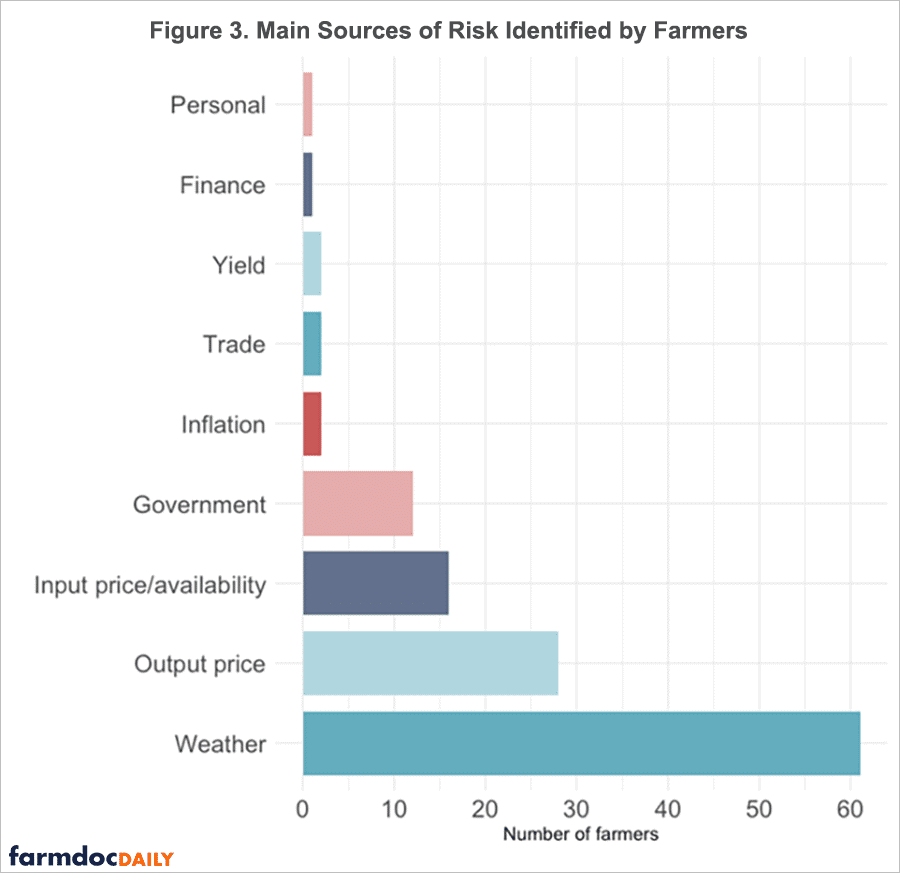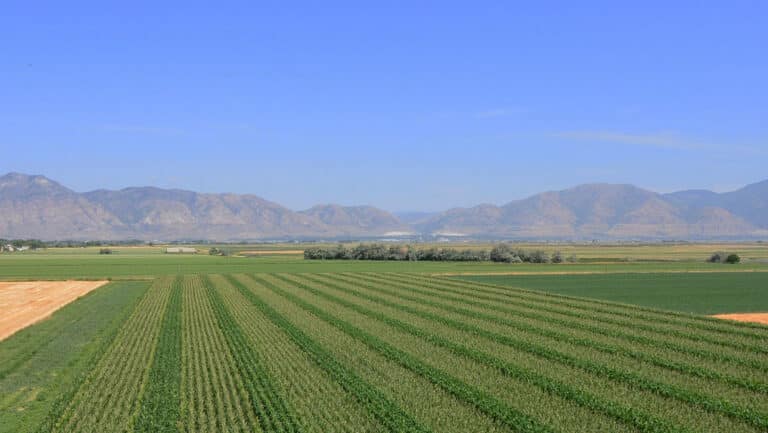The Impact of Severe Weather on Agribusiness Decisions
Unfavorable weather events are identified as the main risk in agriculture, according to countless farmer surveys.
As the number of natural disasters has been steadily increasing year after year in both frequency and severity, so does the farmer’s stress of keeping their operation resilient. This reality has gained congressional attention, leading to historic investments in conservation and climate-smart initiatives over the past several years.
Hearings for the upcoming Farm Bill have confirmed that sustainability is a central topic in the discussion. According to the Gardener Food and Agricultural Policy Survey, more than 70 percent of the public is at least partially worried about climate change. This increasing number of people worried is leading to a spotlight on the agricultural community, and with it often comes misconceptions about agriculture’s impact on climate change.
As people who rely on their land for their livelihoods, few have more incentive to care about their environment more than the farmer. Just as farmers are on the frontlines of food production, they are the first ones to feel the impact of an increasing number of severe weather events.
While much of the discussion is around how farmers can improve their practices, Earth Day is a great time to ask how they’re being affected—and, most importantly, how we can support them in their efforts.
By the Numbers: The Economic Impact of Severe Weather on U.S. Agriculture
Climate-related costs are forecasted to increase by more than nine percent by 2030. These costs are anticipated to directly impact the profit margins of agribusinesses across the U.S. if not addressed.
Analyses show that by 2030, in FAIRR’s 2°C ‘Business as Usual’ scenario, the 40 livestock companies analyzed would suffer a seven percent reduction in profit margins on average, representing $23.7 billion overall. Under this scenario and without mitigations, 20 of these companies would be operating at a loss.
Excerpt from a FAIRR Initiative report.
In 2022, costs from natural disaster events were estimated to be $165 billion, with 18 events generating at least $1 billion in damages each. This continues an upward trend in recent years, with damages of $111.5 billion and $152.6 billion in 2020 and 2021, respectively.
The drivers for these damages continue to be drought and wildfire in the western and southwestern parts of the county, severe weather in the central U.S., and tornados and hurricanes in the Southeast. Given current climate expectations, all findings point to these trends carrying into 2023.
Is a Shifting Climate Influencing Agribusiness Decisions?
The good news is innovation in technical and financial support for climate-smart agriculture is gaining momentum.
Studies have found that while more than 50 percent of the public believes that climate change is the greatest threat to U.S. farm production today, the issue has not appeared prominently in past farm bills in over 30 years. But recent historical investments in combatting weather-related challenges farmers face signal a pivotal shift in that trend.
While much research has been done on the impacts of climate variability on agricultural production, there are few studies on how severe weather influences agribusiness decisions. However, in 2023, the University of Illinois released a study that dove deeper into how unfavorable weather patterns are affecting the agribusiness decisions of Midwest farmers.
In this study, weather was identified as the main source of risk for most farmers, followed by output and input prices and government interventions.

This data led us to wonder if and how farmers are adapting their agribusiness decisions to protect their operations in the coming years. Here’s what we found.
Farm Advisory Support
Half of the farmers reported that they rely on their own experience when making decisions based on weather forecasts. But the other half of the farmers reported seeking advice from both the public sector (university extension offices) and the private sector (retail suppliers, advisors, and neighbors).
Farm Marketing
Most farmers use short-term forecasting in farming decisions related to crop management, including planting and fertilizer application. Of farmers surveyed, 72 percent report regularly checking the ENSO forecast. However, 50 percent indicated that this forecast does not influence their overarching agribusiness decisions, but rather seasonal marketing decisions like forward pricing.
Crop Planting
An overwhelming majority (90 percent) of surveyed farmers reported no influence of short-term and seasonal forecasts on crop selection.
Climate Scenario Analysis
A Climate Scenario Analysis is a process that agribusinesses can undertake to assess the risk of potential scenarios to manage weather-related risk. Currently, they are underutilized in the U.S. ag sector, with only six of the 40 companies analyzed having integrated a climate scenario analysis in their farm risk management plan.
The Use of Decision Support Tools (DST)
40 percent of the respondents surveyed use DST in their farming operations. Common uses for DST include checking the forecast for each of their farms, monitoring rainfall and hail in the different fields, and assessing appropriate conditions for spraying.
But they also reported that DST limitations exist, including the need for:
- Improved medium and long-term prediction models.
- More soil moisture information.
- Soil temperature predictions.
- Better statistical analysis for decision-making.
- Nitrogen application recommendations.
- Nitrogen anhydrous application recommendations based on temperature forecast.
- Optimal planting time recommendations based on soil moisture that consider equipment restrictions.
Conservation and Soil Health Practices
While many different conservation practices are being utilized in various agricultural systems and regions, the two main practices gaining the most popularity in row crop agriculture are cover crops and conservation till. Adoption rates of conservation tillage and cover crops are as follows, according to the 2017 USDA Ag Census:
- Over 100 million acres of U.S. cropland are farmed using conservation till methods.
- Over 20 million acres of cropland are currently planted to cover crops.
- Over 150,000 farm operations report using cover crops, with thousands more estimated to be adopting cover crops since.
As adoption becomes more widespread, so does the evidence of its impacts. According to a survey by the Soil Health Institute, 85 percent of farmers reported an increase in net income for corn and 88 percent reported an increase in net income for soybeans from soil health practices.
Build Agribusiness Resilience with AgAmerica
Innovation in farming practices and technology can aid farmers with risk management in an increasingly volatile climate. Farmers have several demands for improving these tools, but the main barrier is cost.
The adoption of new farming practices can take as much as two to three years to become profitable, depending on the particular management situation and whether incentive payments are part of the profitability equation.
Members of the farm financial community have a vital role in helping provide liquidity and support for farmers and landowners to enhance the value of their land, improve productivity, and promote operational resilience.
As a nationwide lender diversified across both commodities and regions, AgAmerica is well-positioned to offer support through the challenges of transition with flexible loan structures and customized payment options. Contact us today to learn how we can help you ensure your operation can stand the test of time.






